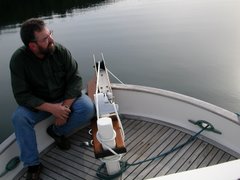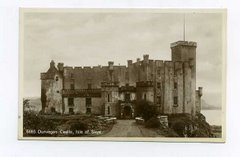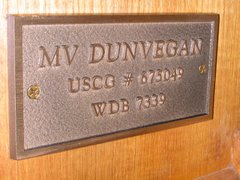Seymour Narrows is a tidal rapid. Tidal rapids are narrow channels where the tidal flow creates whirlpools, boils, eddys, and overflows. It is similar to a rapid in a river, except that the direction of flow reverses when the tide changes. During the 'slack', the few minutes between the ebb tide and the flood tide, the currents in the tidal rapids may slow down to a degree that the rapids become passable.
Seymour Narrows is quite a famous example of a tidal rapid. There used to be a big, barely submerged, rock (Ripple Rock) right at the narrowest part that created so much turbulence it frequently sank ships. In 1958, the rock was blow
n up in the largest commercial non-nuclear blast in North America.
This is what Wikipedia has to say about Seymour Narrows:
"Seymour Narrows was described by Captain George Vancouver as "one of the vilest stretches of water in the world." Even after Ripple Rock was removed, it remains a challenging route. In March 1981, the Star Philippine, a freighter, ran aground in the narrows.
Seymour Narrows is notable also because the flowing current can be sufficiently turbulent to realize a Reynolds number* of about one billion, which is possibly the largest Reynolds number regularly attained in natural water channels on Earth."
It was still better than Cape Mudge.
We timed our passage to arrive about 45 min before the slack time. The current was so fast we surfed our way there and arrived early, so we milled about for a while and then headed in. We scootched through with only a little bit of white knuckles, mostly mine.
 |
| Shooting through Seymour Narrows on a spring ebb tide. |
Then it was into Handfield Bay in Thurston Marine Park for some much desired relaxing, crabbing, and general tooling around. Gorgeous, secluded anchorage and a beautiful night.
*I put in that Reynolds number stuff for any of my engineer-buddies who may be reading.








No comments:
Post a Comment